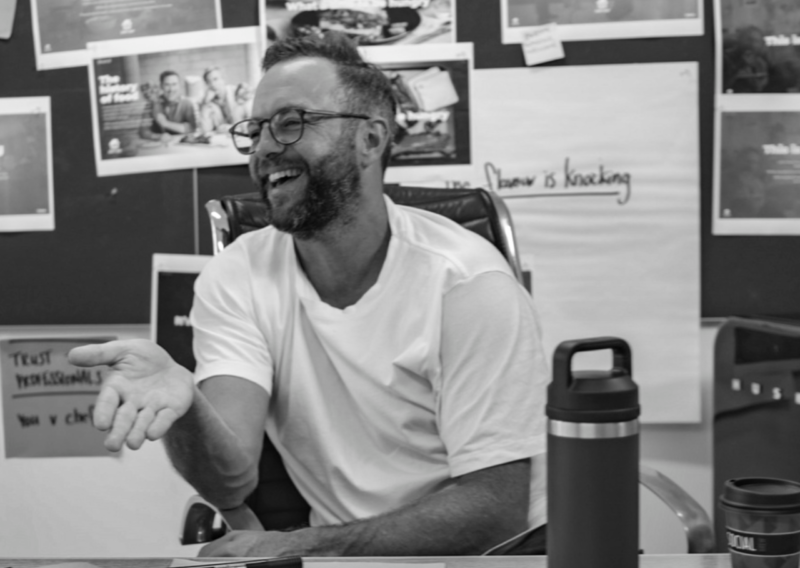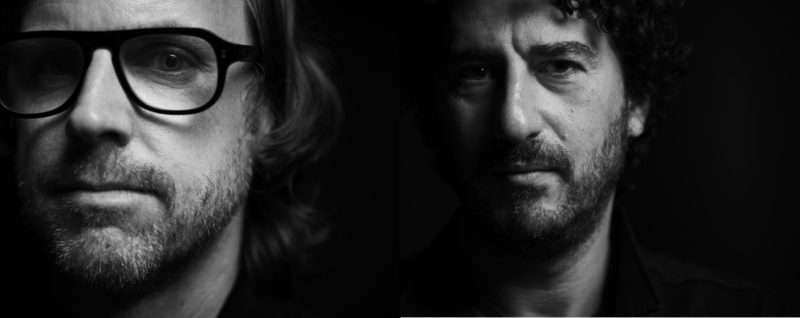How adland kept the creative juices flowing while bottled-up in lockdown
As the country emerges from lockdown, Mumbrella’s Anna Macdonald spoke to some of the industry’s leading creatives on how the pressures of the pandemic has affected the creative process and its impact on creative teams and agencies.
The creative industry is one that has traditionally been hands-on and reliant on in-person collaboration. For the past two years, however, Australia has been going in-and-out of lockdown, with rules varying from state-to-state, territory-to-territory and city-to-city.
These barriers to work, which are not in themselves unique to the creative industry, have influenced the way the creative process operates. From the creatives I spoke to, there were split views on whether these external pressures have led to sub-par work or whether they have fostered greater creativity.

Tourism Australia’s chief marketing officer Susan Coghill
“I think there’s some brands who are hitting it out of the park,” says Susan Coghill, chief marketing officer at Tourism Australia. “And some brands who have lost their edge or they’ve gone a little too maudlin with the pandemic.”
Ben Lilley, founder of Hero Group, pointed to the realities of production during a pandemic as the main barrier of creative ideas, but not in the production of creative ideas themselves.
“I don’t think the ideas are any less impactful or powerful,” says Lilley. “The creative process is still as fundamental as it’s always been, but certainly the constraints of having to create around locked down production considerations have definitely constrained that process.”

Hero’s founder Ben Lilley
But for some, the barriers to production have resulted in more creative work, such as Thinkerbell’s chief creative tinker Jim Ingram.
Ingram explains: “You have to almost start tailoring ideas to what you can achieve. Sometimes, that’s a good thing. Because sometimes the barriers in front of an idea are the reason you swerve around it and come up with something you never would have anyway. And it’s better than what you would have if you didn’t have to think nimbly. Sometimes it’s great having to almost curtail your thinking to the environment of execution, it’s just another thing you have to think through.”
For TBWA Sydney’s chief creative officer Evan Roberts, it’s the people that have taken the brunt of it, not the work itself.

TBWA’s chief creative officer Evan Roberts
“With the utmost respect to all my people, and I just can’t thank them enough for their work, no, I don’t think it’s having an impact. I don’t think it’s having an impact on the work, but it’s having an impact on people. I think it can take longer and be more stressful, but we’re still getting the work out amazingly. They’re a pretty special mob, our group of people. They are managing to do it really well.”
Special Group’s chief creative officer, Julian Schreiber, tells Mumbrella that the pandemic has led to the development of more campaigns that can be put on pause: “Because there’s now a measurable version of uncertainty in the air, people are creating things that they know that they can switch on and off, as opposed to do activations that you need to put a deadline date on… They want to create things that they can put on a shelf if necessary and then put out again.”
Schreiber’s colleague, chief creative officer Tom Martin, adds: “If you don’t constant communicate with each other and know what each other’s up to, creatives can suffer in this environment.”
For many, the main barrier for to the creative process during the work from home period boils down to missing in-person reactions.

Special Group’s Tom Martin and Julian Schreiber (L to R)
“There’s nothing worse, it turns out, than jumping on a Zoom call with your fellow creatives and trying to replicate that idea of sitting together and just concepting in a room for half a day,” says Ingram. “For some reason, two creatives in a room for half a day don’t feel the need to talk if they don’t need to, if they’re just working through their own thing.
“You can go for an hour without saying: ‘Hang on. What about blah?’ And that’s totally fine because then you jam on it, then you get creative again. Ten minutes of silence on a Zoom is torture. You feel you need to say something and you lose that deeper level of being able to just think of something through before you share it.”
Hero’s Lilley adds: “There’s a lot that you do miss out on in terms of those kinds of non-verbal cues and interactions when you’re doing things via screens. When you’re working via screens, a lot of the sort of normal protocols of just how we interact and communicate together.”
Moments that would usually be moments of spontaneous creation, such as walking past someone’s desk in the office or bumping into someone in the kitchen, have disappeared.
“It’s been replaced with everyone very actively, essentially, doing elaborate calendars of working out moments to speak to each other throughout the day,” says Schreiber, “And very actively working out when is the appropriate moment to sort of check in. It’s a very different way of operating.”
Broadly, there are two categories in overcoming the challenges of creating in lockdown: one that focuses on the logistics of creating remotely via screens and the other focuses on maintaining employees’ mental health with extra days off and free therapy sessions.
In terms of the former, those Mumbrella spoke of recreating the spontaneity of creativity that didn’t involve several people editing the same document online. Thinkerbell used Jamboard, a virtual whiteboard where users can put up sticky notes to visualise concepts. Roberts spoke of his teams having long brainstorming sessions on Microsoft Teams with cameras on and no expectations of speaking the whole team to recreate that feeling of ideating in a room.

Thinkerbell’s Jim Ingram
For Coghill, the best opportunities arose when stepping away from a screen: “Tourism, much like marketing and advertising, are both people industries, it’s built on relationships. It’s built on human contact and togetherness. It’s built on human contact and togetherness. We try and mimic that as much as we can, such as walking meetings with team members that might be around [us].”
She adds: “Definitely walking away from the computer screen, I think is really important.”
Special Group had the benefit of having some experience of shooting remotely through its UberEats campaigns with Kim Kardashian. Throughout the pandemic and going in and out of lockdowns, some have found optimism in the process.
“I’m just always buoyed by the idea that nothing has ever stopped creativity to this point,” says Roberts. “Creativity always finds a way in and around any kind of hardship. When you look at war or any kind of oppression, art, creativity, it’s always found its way to do its thing.”

